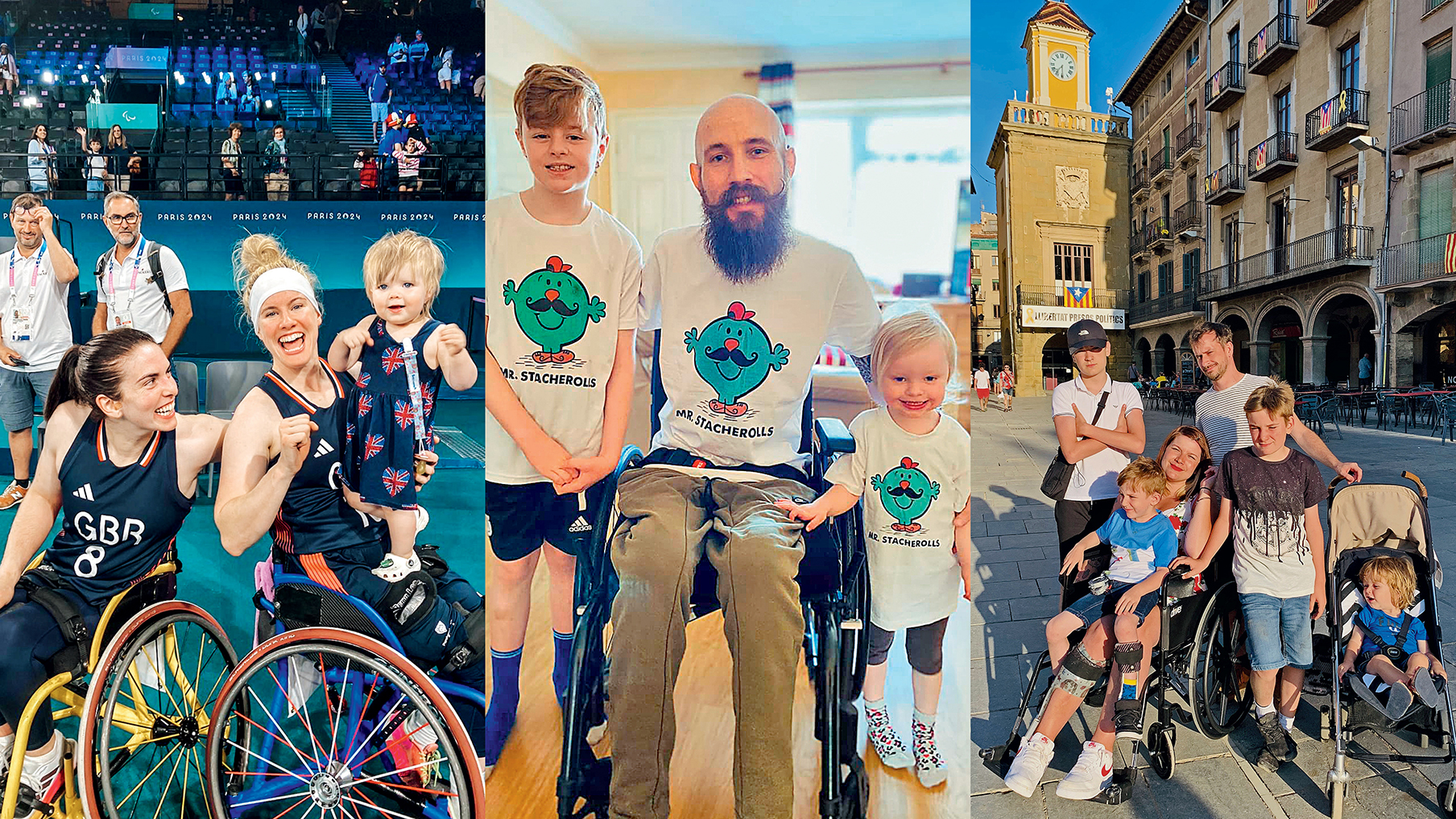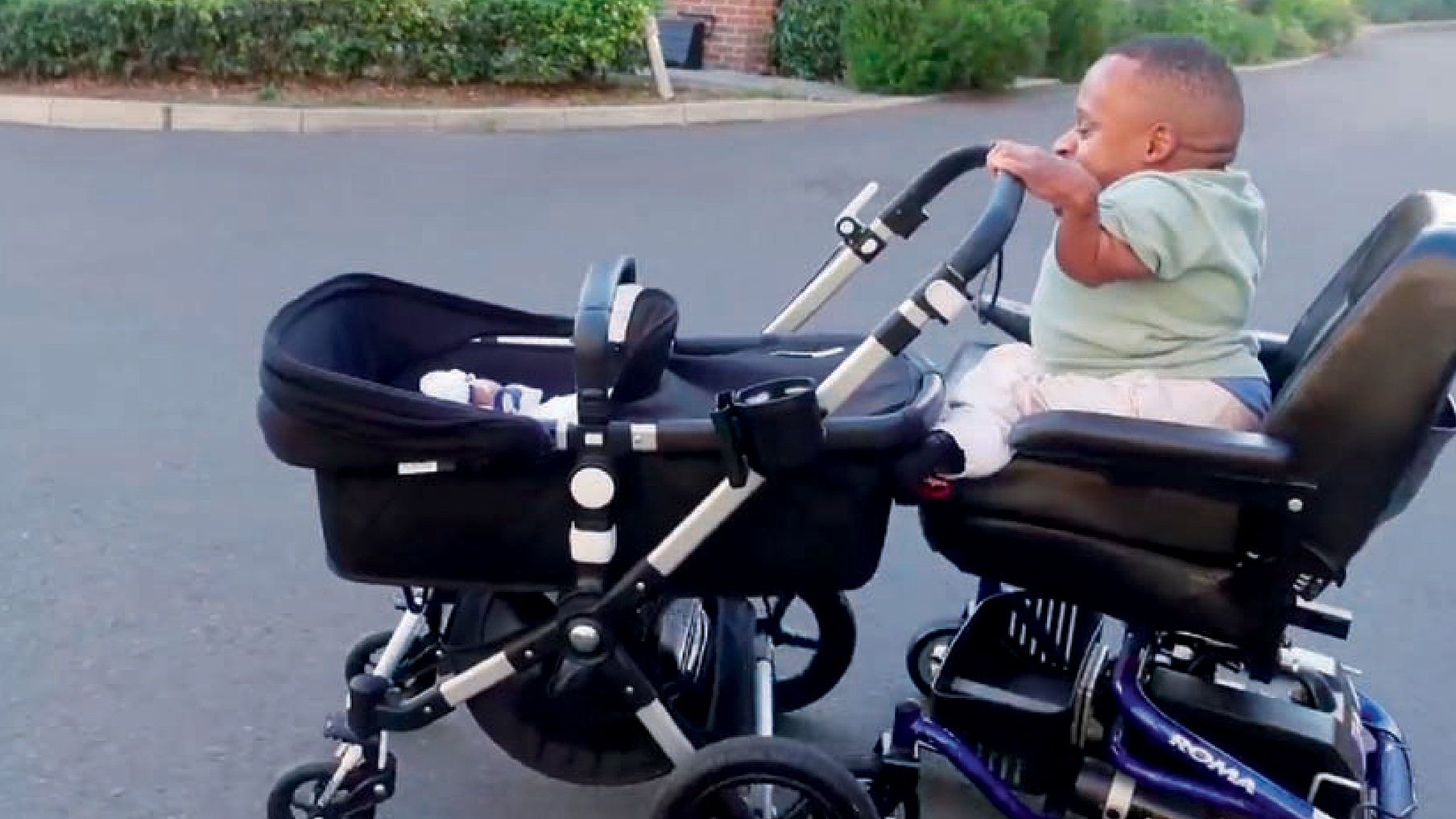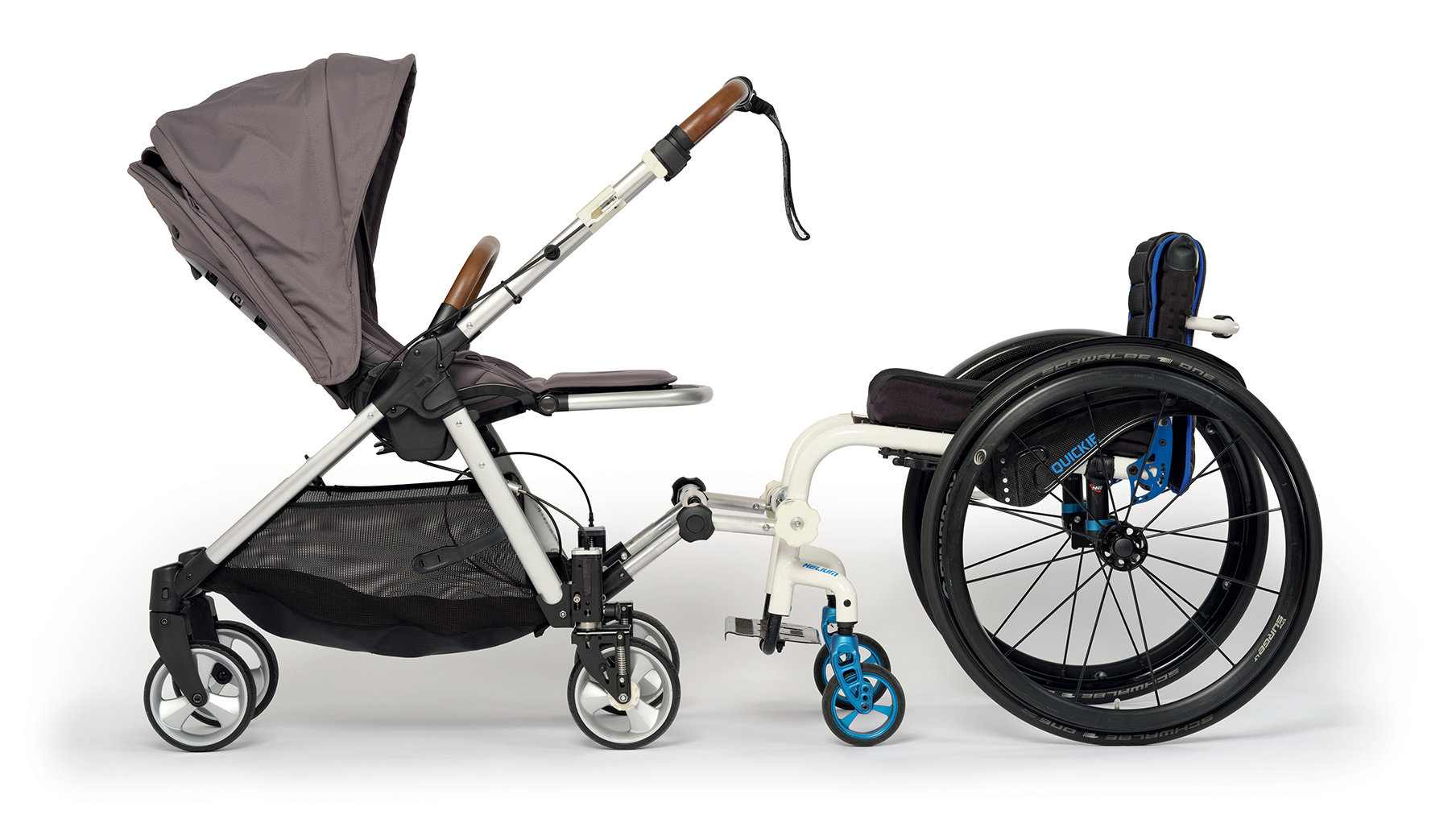For any new parent, being able to pop your child into a pushchair and take them out should be a straightforward task, but for the 20,000 parents of young children in the UK, who use a manual wheelchair, it isn’t.
That was the motivation behind creating the world’s first accessible pushchair, says Matthew Ford, Director of Design & Innovation at Designability. One of our early adopters, Sarah, told us, “At home, I can be everything for my children, however, when I'm out that completely changes; to leave the house, I need to find someone to help me push the pram. I can’t just pop to the park or shops. The number of days my babies wouldn't sleep, what I would have given to be able to walk them around the block to calm them down. It’s true freedom".
Back in the early 2000s, Designability had created an unsuccessful Wheelchair Baby Carrier. “A few years ago, our design team uncovered the original designs,” says Matthew. “We understood why it had been discontinued because it hadn’t met all the user expectations. No one had created anything since, and it was a frequently requested product, so we knew we had to try again”.
It’s taken more than three years, and the input of more than 100 disabled people from initial ideas through to testing prototypes. Designability has been supported by baby brand Mamas & Papas, which provided pushchairs, engineering support, and lots of safety testing. Now the product is about to be unveiled.
Matthew admits to hiccups along the way. “In the pushchair market there’s very little innovation, so we solved many technical problems. Our user trials of the first prototype revealed that it was hard to push over bumpy surfaces, so we went back to the drawing board”.
Designability listened to wheelchair users' strongest request for the pram to “be like any other”, and Matthew says the feedback has been “amazing”. Designability plans to release a limited run of products this year, and make 20 of them available for free. Sign up for their newsletter to keep up to date, or visit designability.org.uk.
But what have parents been doing up until now? In short, what disabled people do in all areas of life figured it out. Parents share their stories...

“You know your baby, so believe in yourself” - Robyn Love, British wheelchair basketball player and mum to a 19-month-old daughter
“We bought a Lap Baby, which was marketed for parents who want to go hands-free at the dinner table. A strap goes around your waist and baby, and there’s a waterproof sheet to protect your legs if they drop stuff. Our car seat, the Maxi Cosi Coral, was also accidentally accessible - it’s marketed at parents who are on the move and don’t want to wake their child. Normal car seats are heavy, but this one is about 1.4kg. The fabric section comes out, and you can attach a strap to it, so when we went on dog walks, Laurie (Robyn's partner and a British wheelchair basketball player) would put the car seat on her lap with the strap around her neck.
“We also got a Snugglebundl baby wrap with handles, which is car-seat safe and allows you to pick a baby up from the ground. We had the Chicco Next2Me cot and a Chicco Pocket Snack Booster seat that straps onto a normal chair or can go on the ground.
”I’d recommend the book Sitting Pretty by Rebekah Taussig. She talks about being a disabled parent, realising that folk might treat you differently, and how to accept that in a positive way. Aside from that, do it your way. Often, we assume, because of internalised and external ableism that we can't do things, but you know your baby, so believe in yourself. Be open and curious. It can be daunting going into the shops and trying out the stuff, but sit in that space and realise you belong there”.
“Trial and error are massive tools” - Ryan Swanepoel has six kids, aged between seven and 23
“There wasn’t much available when I became a parent, so I had to find things myself or ask others. A mobile arm support, supplied through the Oxford NHS rehabilitation service, helped me to feed my daughter when my arms became increasingly worse. A clever solution for bottle feeding was to use a pregnancy pillow to help take the weight of the baby and to prop up the bottle.
“My main challenge was accepting when I couldn’t do something and asking for help. My stubbornness often made me struggle more than I should have. Also, having confidence not to give up too soon is important. Trial and error are massive tools when navigating life as a disabled parent. I live by the motto ‘If at first you don't succeed, try, try again’.
“Get advice through the disabled community - I have found so much handy equipment through Instagram followers’ recommendations. Aside from that, remember that you’re more than capable of raising a child while having a disability. Never put yourself under pressure and never feel pressure from others. Also, remember that it’s okay to ask for help. Every person has the right to become a parent disability isn't a reason not to be”.
“Let go of societal expectations of what a ‘good parent’ looks like” - Nina Tame, disability advocate and content creator, mum of four children, ranging from six to 20 years old
“There didn’t seem to be any accessible or adaptable products when I first became a mum, so we had to freestyle, and I found connecting with other disabled parents online really useful.
“The main thing I used when my babe was small was a fabric portable highchair harness, which was meant to strap a baby to a chair, but I used to it to strap my baby to my lap when I was on a scooter or wheelchair. A baby carrier would also work.
“In terms of advice, let go of societal expectations of what a ‘good parent’ looks like. I gave myself a hard time that I couldn’t take my toddler out solo when, in reality, he loved trips out with daddy, or any other adult we love, and me. The way your body functions doesn’t impact your ability to be a good parent.
“Charities such as remap (remap.org.uk) are amazing for coming up with ideas for adaptations that aren’t readily available, and reading books like We’ve Got This: Essays by Disabled Parents help you to feel much less alone on this journey.”

“Find your community” - Winston Clements, speaker and disability advocate. His daughter is three
“Through loads of trial and error, I got the hang of pushing the stroller with my left hand and controlling my powerchair with my right, using the joystick. It works better in a shopping mall, because the floor is smooth, compared to when you're outdoors and the terrain can be unpredictable.
“When she became a bit older, she was able to sit on my lap using a safety harness. We also got a booster seat with a table attachment, which would sit on top of a regular dining chair, and I could spoon feed her.
“We had a portable changing mat, so I could change her on the bed or a sofa a good height for me to transfer myself across. I also figured out a way to get myself on the floor for playtime; I stack our sofa pillows into a mini staircase that allows me to move from my chair to the floor.
“My advice is to be intentional about finding a community. My condition is osteogenesis imperfecta, (brittle bones disease), and a year ago I joined a Facebook group for people with osteogenesis imperfecta. I realised a lot of the questions I had as a new parent had been answered. If you find a community with your lived experience, chances are they’ll have gone through some of the situations that you are facing”.





